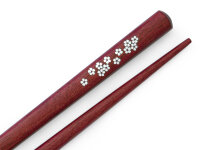Tonkatsu: When the breaded schnitzel came to Japan

Tender meat, crispy breading, and hearty sauce – that's what defines Tonkatsu just like the beloved Wiener Schnitzel. It's the subtle differences that make the Japanese recipe unique and enthusiasts crave it.
A versatile meat dish
Cutlet originally came from Italy to Vienna. Similarly, Tonkatsu is not a typical Japanese specialty – but has its roots in the West, after which the dish was adapted into Japanese cuisine. Such dishes (Yoshoku) reached Japan during the Meiji era (1868 – 1912) when the country opened up to the rest of the world. The French Schnitzel served as a model for Tonkatsu. While originally veal was used for the French Schnitzel, in Japan, they soon turned to more affordable pork. This is how the name came about: ton means pig, and katsu is the abbreviation of katsuretsu. This, in turn, is the Japanese pronunciation of the English word Schnitzel, translated as "Schnitzel." So, Tonkatsu is nothing but a pork Schnitzel.
Nevertheless, the Japanese version is unique. Why? Just like with the Western cutlet, the meat is tenderized to make it thin and delicate. It is then seasoned and coated in flour and egg. Instead of breadcrumbs, Japan uses Panko, a fine Japanese breadcrumb made from white bread crumbs. The Panko gives Tonkatsu its crispy crust. Instead of pan-frying, the cutlet is then deep-fried in a fryer or a pot with hot oil. After draining for a bit, it is briefly returned to the hot oil to make it even crispier.
A proper Japanese cutlet comes with Tonkatsu sauce. It is based on the same ingredients as the sauce served with Okonomiyaki, Yakisoba, and Takoyaki: Worcestershire, tomato, and soy or oyster sauce. It can be bought ready-made in Asian stores, but homemade tastes just as good.
How to eat tonkatsu Schnitzel?
Instead of French fries and salad, Tonkatsu is traditionally served with finely chopped cabbage and some vegetables. The cutlet itself is usually sliced small and served with the characteristic sauce. But that's by no means the only way to enjoy the Japanese Schnitzel. Here are some ways to savor Tonkatsu in Japan:
- On the menu (Teishoku) with miso soup, rice, and other side dishes
- As Katsudon in a bowl on top of rice and cabbage, topped with a beaten egg
- In a sandwich with white bread – Katsu sando, a popular snack for in-between
- In Katsu Curry with rice and a special fruity sauce. Japanese curry is usually cooked with carrots, onions, potatoes, and beef
You can find Tonkatsu not only in specialized restaurants but also in almost every snack stand that offers traditional Japanese dishes such as Donburi bowls.
Tonkatsu is a popular comfort food, especially enjoyed before exams or important events. Not without reason: besides its strengthening effect, the name also serves an important function. Katsu also means "to win." So, when you eat Tonkatsu, you symbolically already have victory in your pocket.
Prepare Japanese Schnitzel yourself
 1 personNo. of persons
1 personNo. of persons
 ca. 45 minutesTotal Time
ca. 45 minutesTotal Time
 easyLevel of difficulty
easyLevel of difficulty
 main mealDish
main mealDish
 ca. 600kcal per portion Calories
ca. 600kcal per portion Calories
 Meat
Meat
 Lactose-free
Lactose-free
 Kitchenware
Kitchenware

For Tonkatsu, you can use two types of pork cuts: either fillet or loin. The cutlet itself is easy and quick to prepare. Side dishes and Tonkatsu sauce then give it that special touch.
|
200g
high-quality pork cutlet or chop
|
|
1
egg
|
|
some wheat flour
|
|
Salt and pepper
|
|
Panko
|
|
Oil for deep-frying
|

Recipe for tonkatsu sauce
 2 personsNo. of persons
2 personsNo. of persons
 ca. 30 minutes Preparation time
ca. 30 minutes Preparation time
 ca. 45 minutesTotal Time
ca. 45 minutesTotal Time
 easyLevel of difficulty
easyLevel of difficulty
 main mealDish
main mealDish
 Vegetarian
Vegetarian
 Lactose-free
Lactose-free
|
1 1/2 tbsp.
Worcestershire-Sauce
|
|
4 tsp.
oyster sauce or soy sauce
|
|
2 tbsp.
tomato sauce or ketchup
|
|
1 tbsp.
sugar
|





















-from-the-yakiyaki-grill-pan.jpg)




